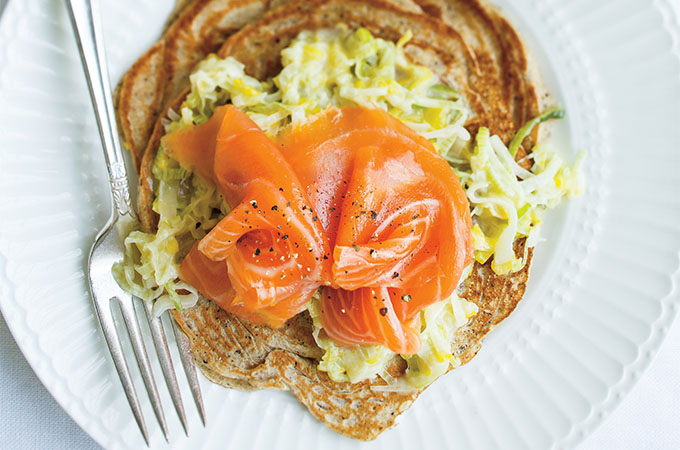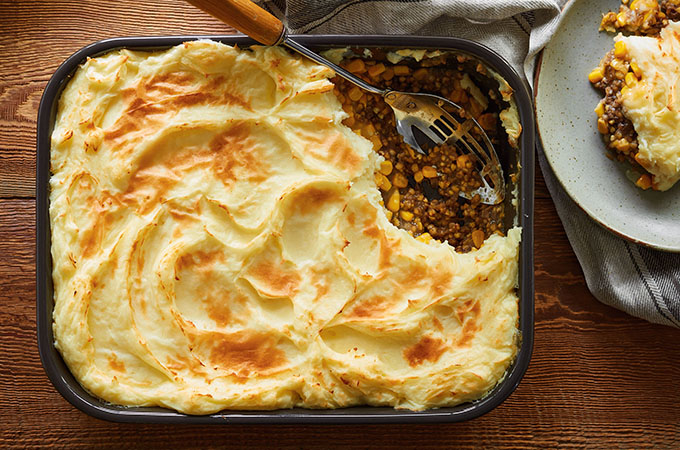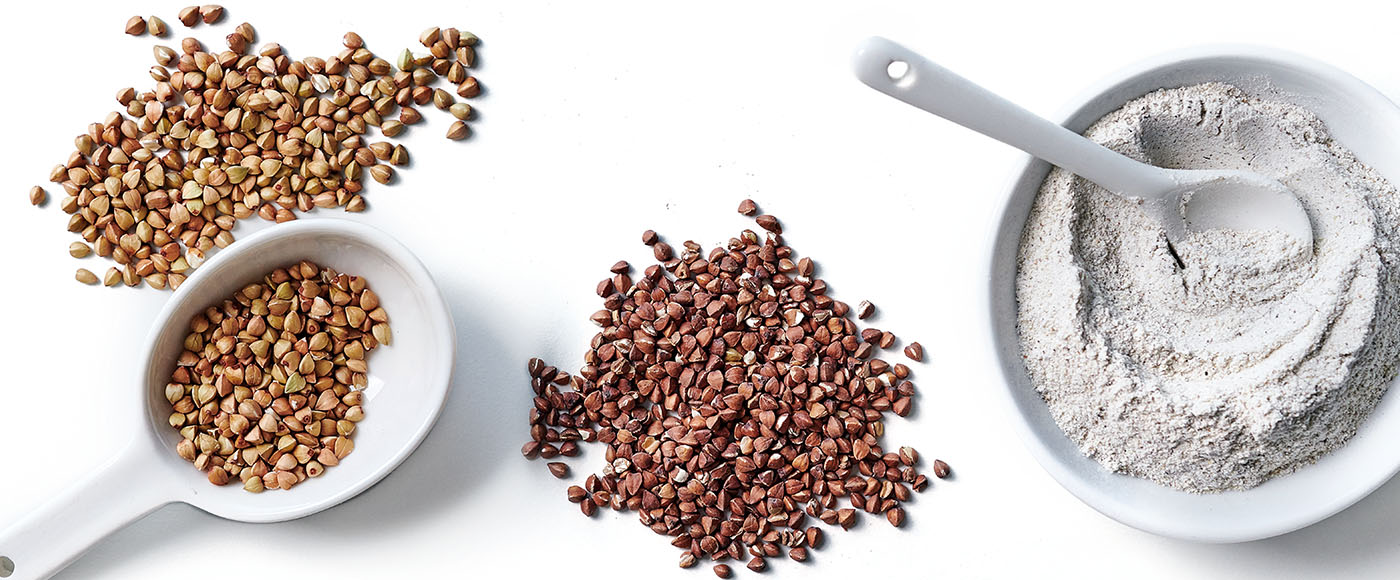Where does it come from?
Buckwheat originates from China, but can be found all over the world. It is used, for example, in Japan to prepare soba noodles, in Brittany to make pancakes, and in Eastern Europe to cook a traditional porridge. Buckwheat even grows in Canada! These attractive triangular dark brown groats can be ground into flour or hulled and sold as grains.
How can I cook with it?
Buckwheat flour is the star ingredient in our pancakes served with molasses and our buckwheat crepes with sparkling water. It can also replace a small amount of wheat flour in muffins, cookies and breads. Whole groats can be cooked like rice pilaf, in water or broth. They can even occasionally replace the meat, such as in this vegetarian buckwheat shepherd’s pie recipe.
What does it taste like?
The particular taste of this “fake” grain (because it isn’t part of the same family as wheat, barley and oats, but it remains a grain all the same) is reminiscent of that of wild rice, with more earthy and nutty notes. And just like those of wild rice, buckwheat groats open up when cooked. Therefore, avoid overcooking them so they don’t turn into mush! As for the toasted groats, called kasha in Russian, they are even tastier, with more caramelized notes. Their flavour goes wonderfully with chocolate, like in our caramelized white chocolate tart with clementines.
The hulled buckwheat groats can be sold in their natural state (white) or toasted (kasha).
Is it good for me?
With its great source of protein (10% to 12% of dry weight), full range of essential amino acids and high fibre content, vitamins and minerals, buckwheat compares favourably to other whole grains. And while it’s sometimes called black wheat, it’s not related to wheat at all and is perfectly safe for people who eat gluten free. Try it, for example, in this gluten-free bread recipe.
Want to cook with buckwheat? Here are a few ways to enjoy it:

WEEKDAY RECIPES
Buckwheat Pancakes with Smoked Salmon and Leek




